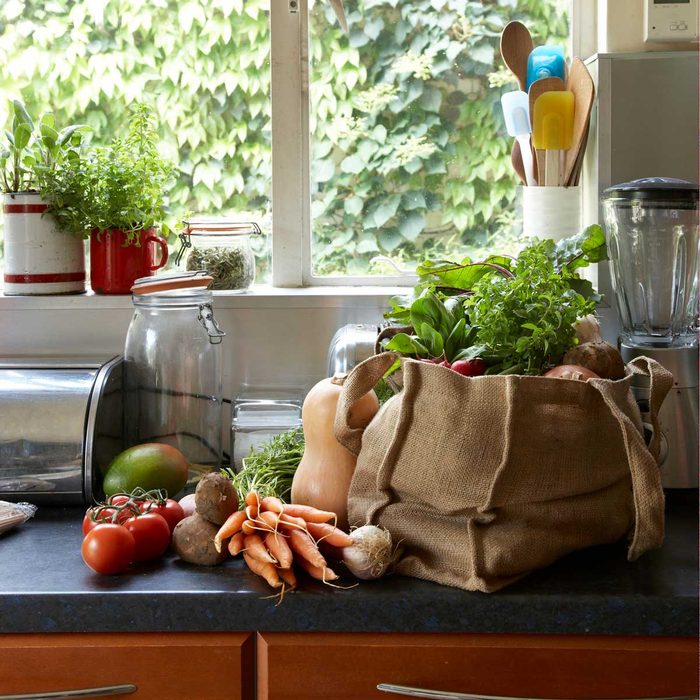
Choosing Countertops That Last
Countertops go in and out of style like any other home material. In 2021, we’re seeing an end to the white marble craze and a rise in butcher block and other warm neutrals. Next year’s trend could be something else. That’s why it’s important to consider which countertop material fits your lifestyle, rather than choosing on aesthetics alone.
Here are the advantages and disadvantages of some of the top countertop options, according to Brent Tompkins, purchasing agent and estimating manager at Adair Homes. You might also be interested in these best countertop paint and refinishing kits to keep them looking updated.
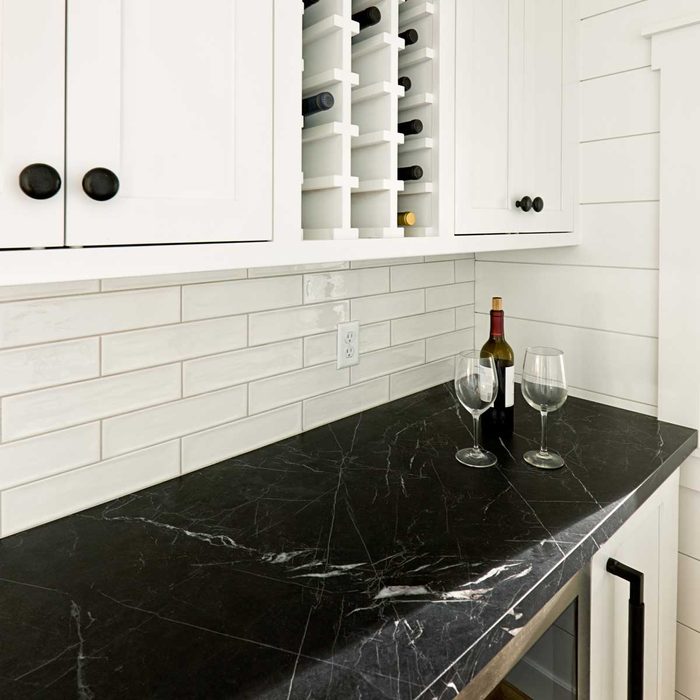
Quartz
Quartz countertops are engineered from natural quartz, which is why there are so many color and design options. They’re durable and low maintenance. Unlike granite, they never have to be sealed or polished. Quartz countertops are also less absorbent and more stain and scratch resistant than other natural stone options, making quartz more sanitary and long-lasting.
Quartz does have some negatives, though. “Quartz has a more homogenous, or consistent, look and feel than granite or marble,” says Tompkins. And while it’s resistant to stains, it is sensitive to fast temperature changes, such as pots fresh off the stove. It is one of the most expensive countertop options.
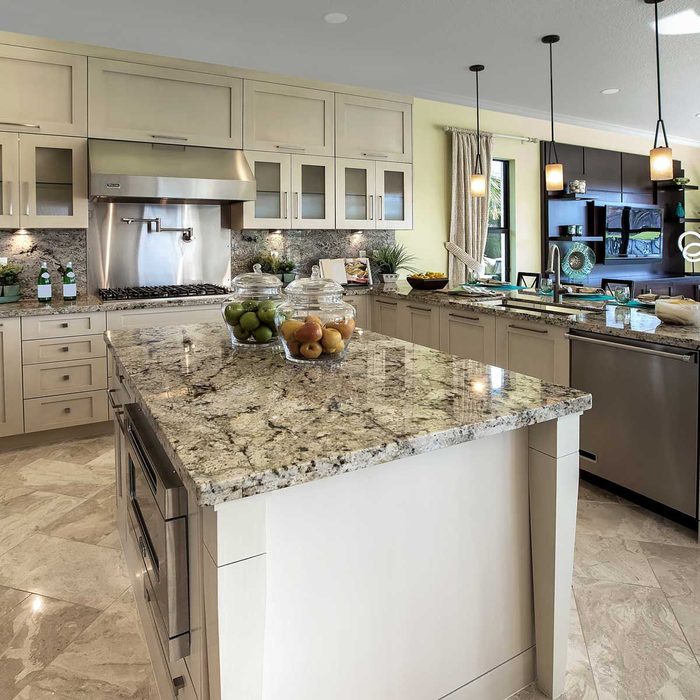
Granite and Marble Countertops
For a timeless yet one-of-a-kind kitchen masterpiece, granite and marble are top choices. These natural countertop materials come in many colors and patterns, and each piece is unique. Although they’re more prone to fading and staining than quartz, granite and marble are still durable countertop options. The natural look matches all different kitchen cabinet colors.
Natural stone countertops do require some maintenance, but it’s nothing overwhelming. Granite and marble can be cleaned with mild dish soap and water or a cleaning product formulated for natural stone. Granite and marble countertops also need to be sealed at the manufacturer’s recommended intervals.
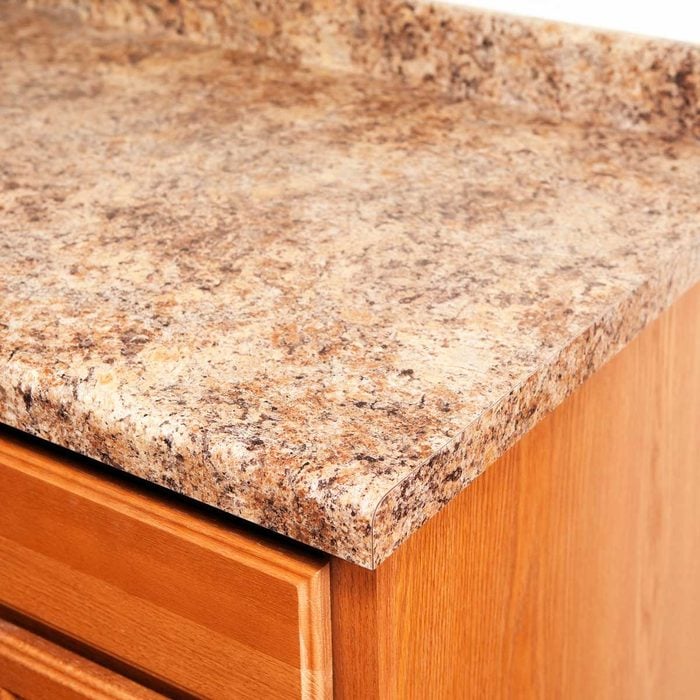
Laminate
Laminate countertops, such as Formica, are some of the most affordable options. “Laminate is a smooth, seamless material that is resistant to stains and easy to clean,” says Tompkins. “The synthetic materials used to create laminate countertops often last a long time when well cared for.”
Like quartz, laminate countertops have endless color and design options because they’re manufactured, not cut from slabs of stone.
The biggest drawback of laminate is the sacrifice of luxury. “While there is a wide variety of beautiful laminate options, the general perception is that they aren’t as nice,” Tompkins says. Laminate countertops are also difficult to repair. Burn marks or chips may require a full replacement.
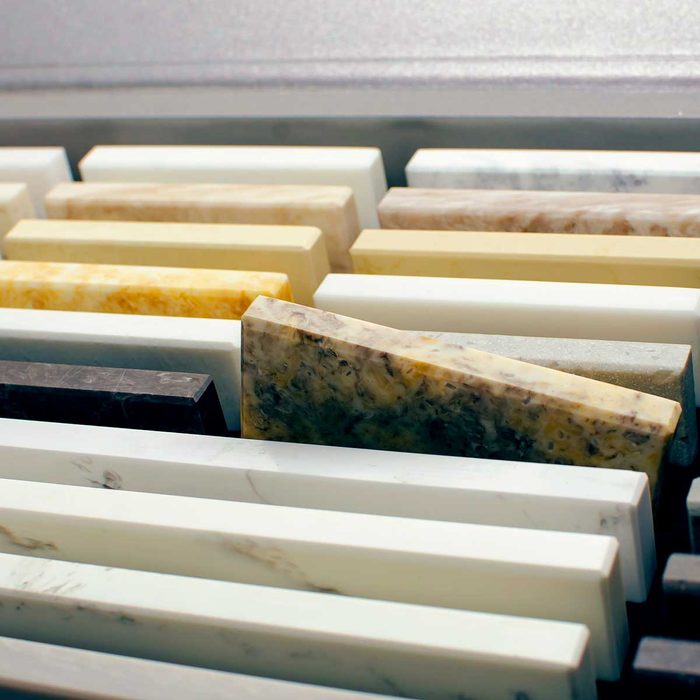
Solid Surface
Solid surface is a mid-range countertop material and a popular alternative to laminate. One popular brand is Corian. It is not porous, so it is easy to keep clean and sanitary. It’s also stain resistant and easy to repair. Solid surface countertops are more DIY-friendly than materials like granite.
Although solid surface countertops have existed for decades, they, like laminate, aren’t considered as nice as quartz or granite. Solid surface also tends to be more expensive than laminate, but still not as expensive as stone.
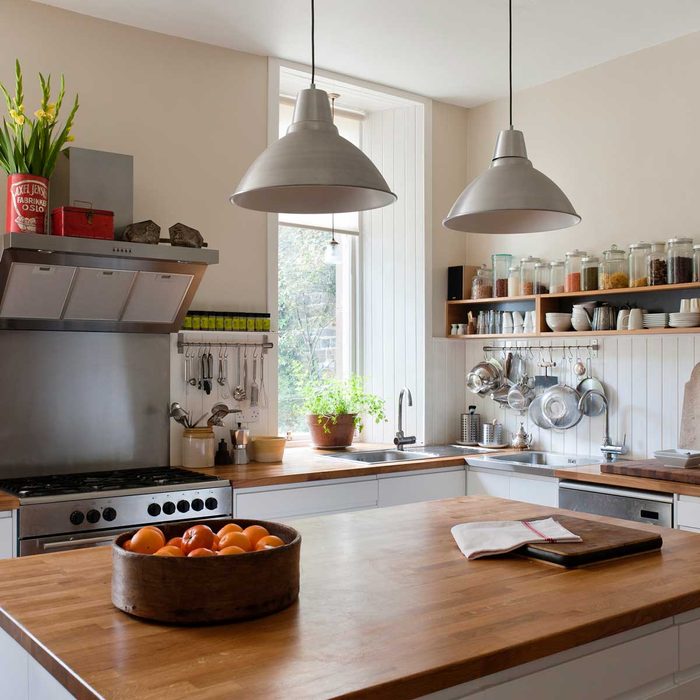
Wood
Butcher block countertops are a warm, organic-looking option. They’re on the rise as natural materials become more sought-after. You can use butcher block countertops just like a wood cutting board, and you can sand them down to remove scratches. Perhaps most surprisingly, wood countertops are quieter than other surfaces.
Butcher block countertops are more expensive than laminate, but they’re typically less than stone. Prices fluctuate with the cost of lumber. The surface needs to be cleaned and disinfected diligently. Butcher blocks must be maintained with a food-safe mineral oil.
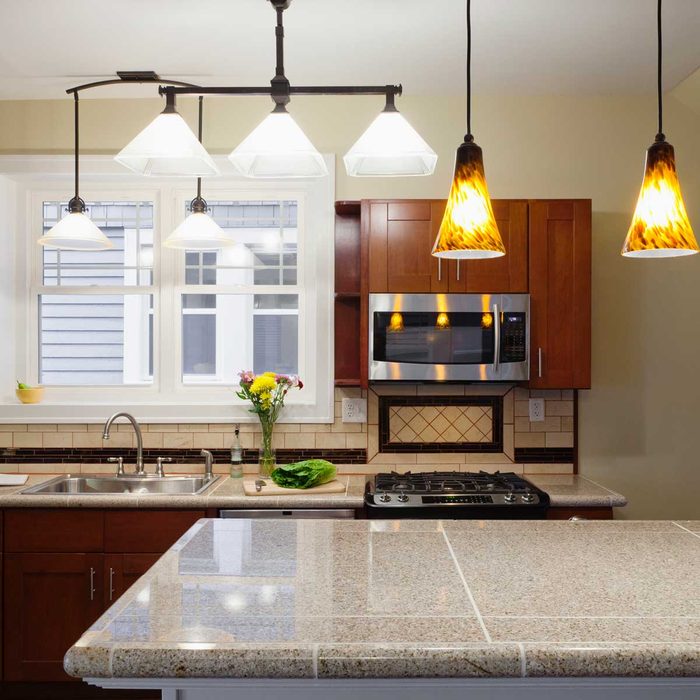
Tile
Tile is one of the most customizable countertop options. Tiles come in different shapes, colors and patterns, so they can fit any design style. There are colorful, Mediterranean-inspired designs and simple, solid colors. They’re also easy to fix when damaged. “You can replace a single tile instead of an entire slab,” Tompkins says.
Because tile countertops aren’t one large slab, they make for a rougher work surface. But, Tompkins says, “large tiles can minimize seams.” The seams also pose a health risk. “Grout between tiles can become stained and worn over time and requires regular sealing,” Tompkins says. “Grout can also harbor bacteria, especially when it’s not maintained well.”
And while repairs are easier than with other countertop materials, tile is more likely to crack or chip.